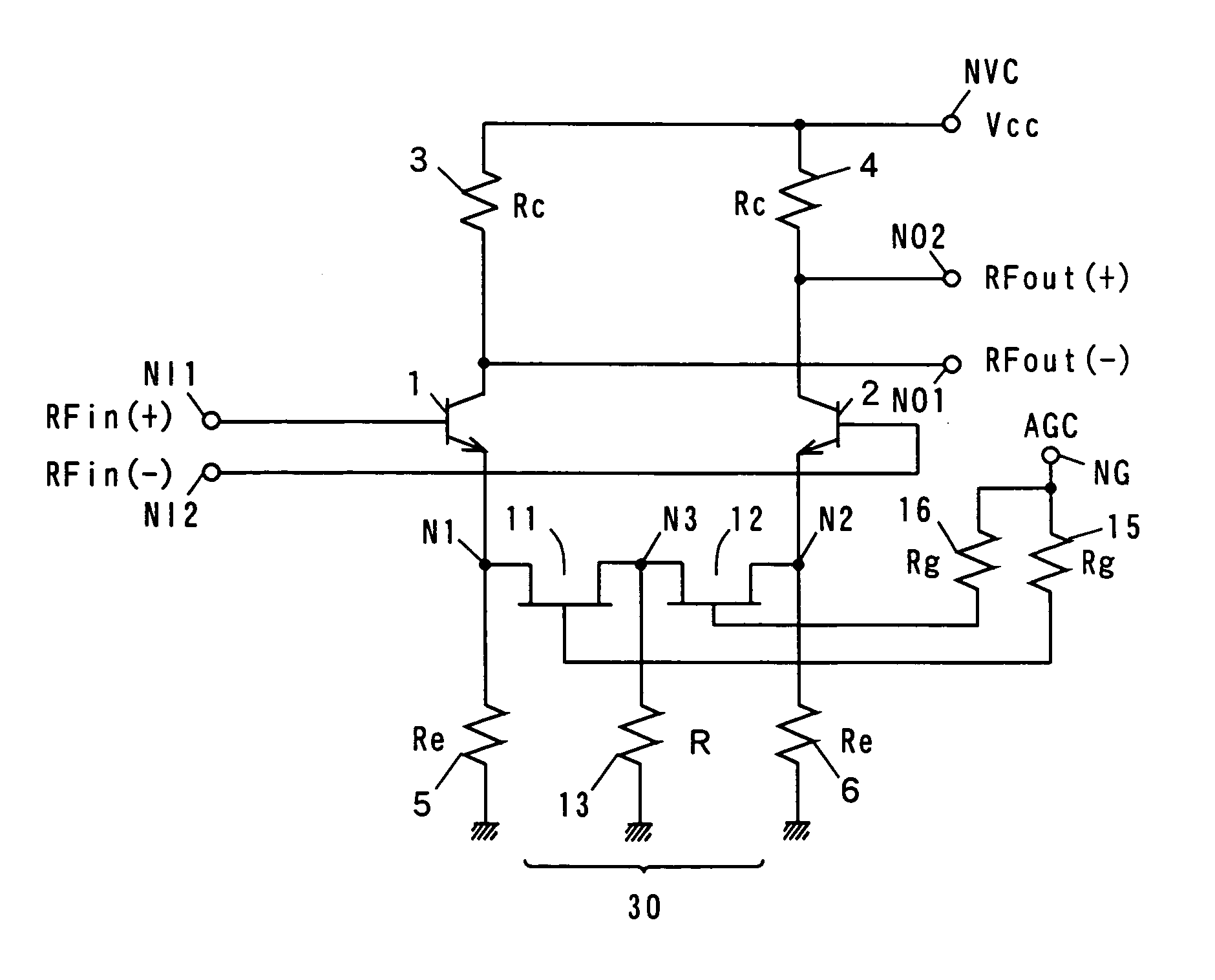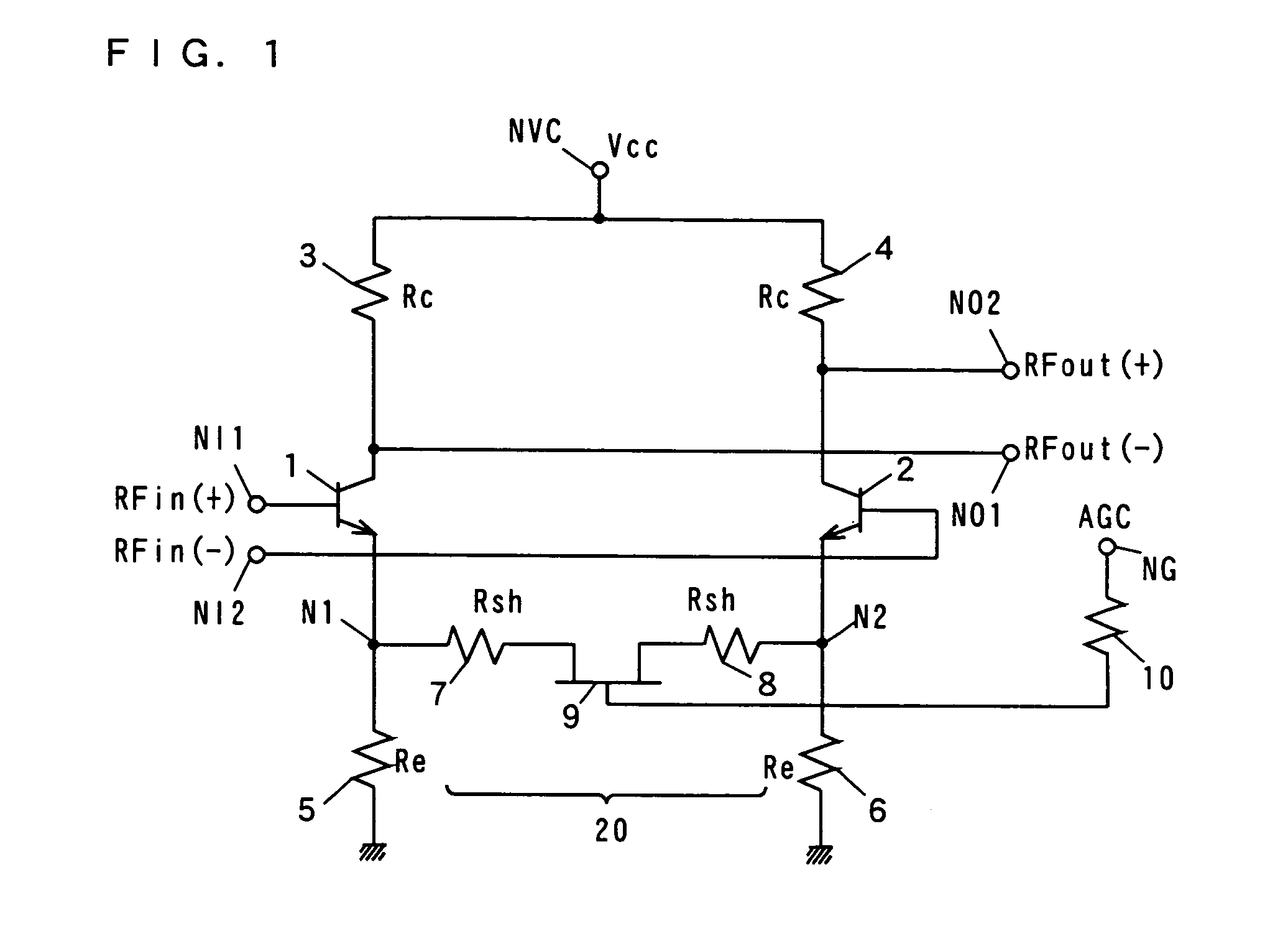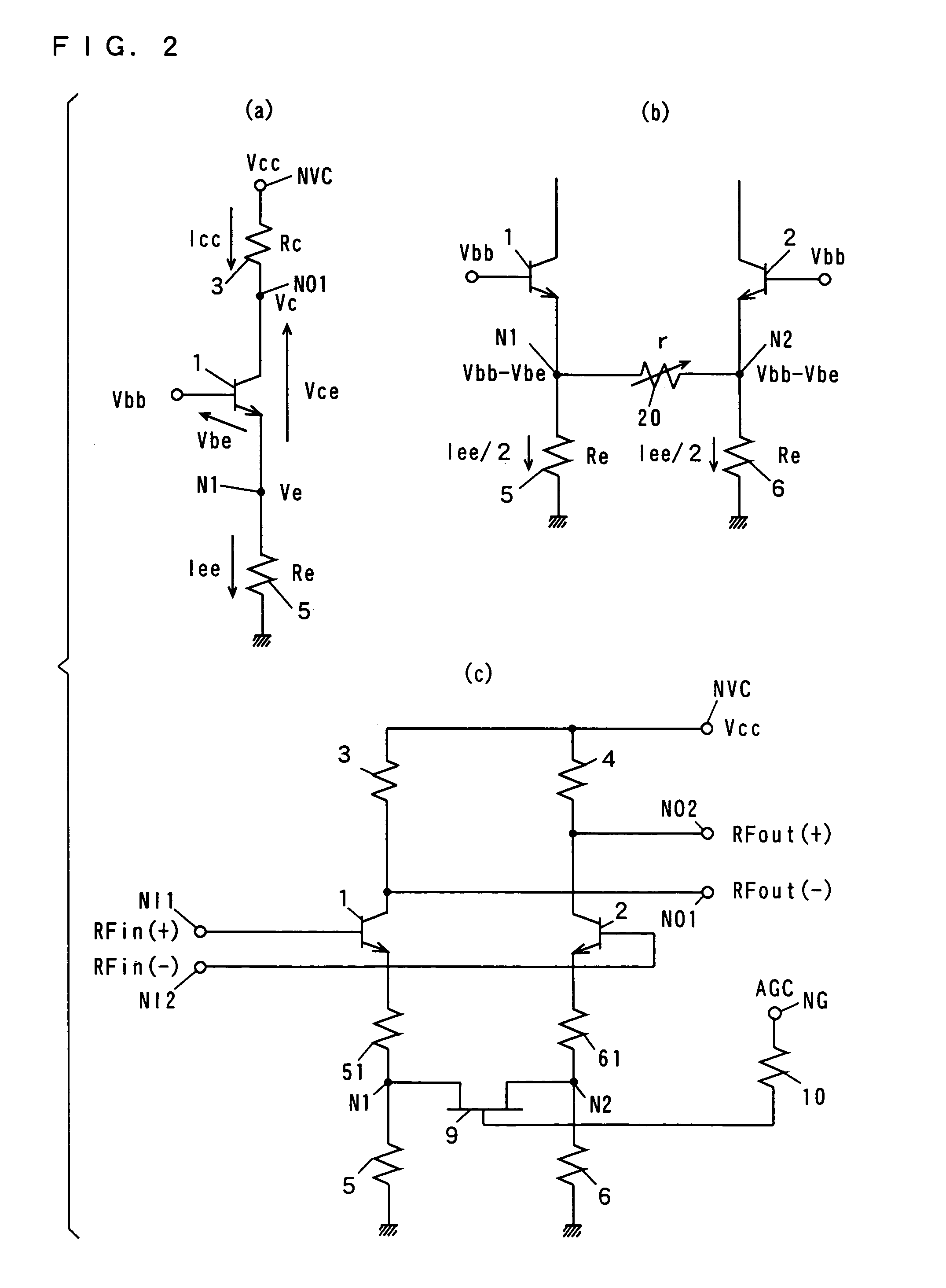Variable impedance circuit, variable gain differential amplifier, multiplier, high-frequency circuit and differential distributed amplifier
a technology of variable gain and amplifier, applied in the direction of electric/magnetic computing, instruments, computation using denominational number representation, etc., can solve the problems of small dynamic range, deterioration of distortion characteristics around a specific control voltage, and inferior power consumption and noise characteristics, so as to achieve the effect of stabilizing the operating current and simplifying the structure of each differential amplifier
- Summary
- Abstract
- Description
- Claims
- Application Information
AI Technical Summary
Benefits of technology
Problems solved by technology
Method used
Image
Examples
first embodiment
[0131](First Embodiment)
[0132]FIG. 1 is a circuit diagram showing the structure of a variable gain differential amplifier according to a first embodiment of the present invention.
[0133]The variable gain differential amplifier shown in FIG. 1 comprises bipolar transistors (hereinafter abbreviated to transistors) 1, 2, resistances 3, 4, 5, 6, 10, shunt resistances 7, 8, and an n-MOSFET (hereinafter abbreviated to FET) 9. The shunt resistances 7, 8 form a variable resistance circuit 20. A bias voltage is determined by the resistances 3, 4, 5, 6.
[0134]The base of the transistor 1 is connected to an input terminal NI1 receiving an input signal RFin(+), and the base of the transistor 2 is connected to an input terminal NI2 receiving an input signal RFin(−). The input signals RFin(+) and RFin(−) are differential inputs. The collectors of the transistors 1, 2 are connected to a power supply terminal NVC receiving a power supply voltage VCC via the resistances 3, 4, respectively. The emitter...
second embodiment
[0148](Second Embodiment)
[0149]FIG. 3 is a circuit diagram showing the structure of a Gilbert-cell multiplier (mixer) according to a second embodiment of the present invention.
[0150]The Gilbert-cell multiplier shown in FIG. 3 comprises bipolar transistors (hereinafter abbreviated to transistors) 1, 2, 31, 32, 33, 34, resistances 3, 4, 5, 6, 10, shunt resistances 7, 8, and an n-MOSFET (hereinafter abbreviated to FET) 9. The shunt resistances 7, 8 and the FET 9 form a variable resistance circuit 20. A bias voltage is determined by the resistances 3, 4, 5, 6.
[0151]The base of the transistor 1 is connected to an input terminal NI1 receiving an input signal RFin(+), and the base of the transistor 2 is connected to an input terminal NI2 receiving an input signal RFin(−). The input signals RFin(+), RFin(−) are differential inputs. The transistors 31, 32 are inserted between the collector of the transistor 1 and an output terminal NO1 and between the collector of the transistor 1 and an out...
third embodiment
[0164](Third Embodiment)
[0165]FIG. 6 is a circuit diagram showing the structure of a variable gain differential amplifier according to a third embodiment of the present invention.
[0166]The variable gain differential amplifier shown in FIG. 6 differs from the variable gain differential amplifier shown in FIG. 1 in that it is provided with a variable resistance circuit 30 in place of the variable resistance circuit 20.
[0167]The variable resistance circuit 30 comprises FETs 11, 12, and resistances 13, 15, 16. The FETs 11, 12 are connected in series between nodes N1 and N2. The gates of the FETs 11, 12 are connected to a control terminal NG receiving a control voltage AGC via the resistances 15, 16, respectively.
[0168]The resistances 3, 4 have an equal resistance value Rc; the resistances 5, 6 have an equal resistance value Re; and the resistances 15, 16 have an equal resistance value Rg.
[0169]Otherwise, the structure of the variable gain differential amplifier shown in FIG. 6 is the sa...
PUM
 Login to View More
Login to View More Abstract
Description
Claims
Application Information
 Login to View More
Login to View More - R&D
- Intellectual Property
- Life Sciences
- Materials
- Tech Scout
- Unparalleled Data Quality
- Higher Quality Content
- 60% Fewer Hallucinations
Browse by: Latest US Patents, China's latest patents, Technical Efficacy Thesaurus, Application Domain, Technology Topic, Popular Technical Reports.
© 2025 PatSnap. All rights reserved.Legal|Privacy policy|Modern Slavery Act Transparency Statement|Sitemap|About US| Contact US: help@patsnap.com



